The first flight of an ion-driven rotational device and a new type of effective in-atmosphere ionic motor resulted from the collaboration between two researchers, one in the department of Electrical and Computer Engineering at SUNY Oswego and one in the Department of Applied Physics / Condensed Matter at the INCEMC Timisoara.
The two researchers are former “Electromotor” high school colleagues and Physics graduates from the West University of Timisoara: Dr. Adrian Ieta on behalf of the American institution and Dr. Marius Chirita Mihaila (photo 1)on behalf of the Romanian institution.
Dr. Marius Chirita said that it is basically about applying negative high voltage, in the tens of kilovolts range, between two electrodes: one mobile (rotor) and one fixed (grounded metal cylinder). The rotor electrode is actually a slightly redesigned drone propeller; metal copper sheet and metal pins are used to implement the propeller electrode.
When high voltage is applied between the electrodes, the air ionizes near the sharp edges of the propeller electrode (metal tape and/or pins) and so-called “corona wind” is generated which eventually leads to the propeller spin.
The simplicity of the motor is shocking; there are no coils or other accessories besides the two electrodes. The propeller itself becomes the motor.
The two friends and researchers had started talking about the possibility of making such a motor about 6-7 years ago and the discussions concluded in a couple of previous conference presentations at the annual meetings of the Electrostatics Society of America.
Two scientific articles on the new ionic rotational motor were published in 2019. They are the following:
Adrian Ieta, Marius Chirita, Electrohydrodynamic propeller for in-atmosphere propulsion; rotational device first flight, Journal of Electrostatics 100 (2019), https://doi.org/10.1016/j.elstat.2019.05.004
Adrian Ieta, Marius Chirita, Electrohydrodynamic self-boosted propeller for in-atmosphere propulsion, arxiv.org/abs/194.01395, 19 Jan. (2019), https://arxiv.org/abs/1904.01395
The rotary ionic wind motor and characteristics were recently presented at the annual meeting of the Electrostatics Society of America, Session“Atmospheric and Space Applications” held June 10-12, 2019 in Rochester NY: http://www.electrostatics.org/annualmeeting.html
Interesting videos related to this research can be seen at: https://www.youtube.com/watch?v=0g8z7wWIoJs
https://www.researchgate.net/deref/https%3A%2F%2Fdoi.org%2F10.1016%2Fj.elstat.2019.05.004
“The first short ionic propeller flight was achieved by my friend and collaborator Adrian Ieta at SUNY Oswego, USA. Then, in the fall of 2018 I set the ionic propeller on a metal rod. I optimized both the propeller electrode as well as the parameters of the counter-electrode so that I was able to obtain a ‘record’ high rotational speed of 1856 rot/s. I also obtained the first long lasting flight of an ion-driven rotary device. The propeller can fly on the rod indefinitely as long as the power supply is not turned off.
 I certainly performed over a thousand tests until I reached the proper geometrical configuration which can also be much improved”, said the Romanian physicist.
I certainly performed over a thousand tests until I reached the proper geometrical configuration which can also be much improved”, said the Romanian physicist.
In addition, the first ionic flight experiments at lower than atmospheric pressure and in gases other than air were also conducted at INCEMC Timisoara.
“I performed tests in a few inert gases, but also in CO2 and SF6, at atmospheric pressure as well as at lower pressure. I demonstrated that inert gases are not good (ionic wind generators) while CO2 is very good, actually better than air at atmospheric pressure. The propeller flew at up to 0.75 atmospheric pressure (P0), which corresponds to altitudes about 2500-3000m.
Experiments in SF6 pleasantly surprised us. While the ionic propeller would fly in air at atmospheric pressure at 1250 rot/min, in SF6 the propeller flew at half of the value – 650 rot/min. The thrust to power efficiency in SF6 is unexpectedly high.
I was able to increase the voltage from -33 kV to -60 kV without any breakdown. This was the point of using a strong electronegative gas – to suppress the free electrons and prevent electrical breakdown. The thrust efficiency was larger than values reported in flight conditions by MIT researchers for air (efficiencies in CO2 and SF6 have never been tested before). The MIT group designed a very different ionic propulsion motor”, said Marius Chirita.
Practical applications of the new type of motor can easily excite the imagination of any science fiction enthusiast.
“What we have achieved is far from a perfect device. Think about systems including two or more propellers on the same axis/rod spinning in opposite directions like what Adrian Ieta has already demonstrated at SUNY Oswego. This solves the problem of the conservation of angular momentum for which regular helicopters use an additional propeller in the tail.
There are so many moving parts in a classical motor; we have only one – the propeller- which is also the motor. Chances for something to go wrong decreases significantly. For our motor, the force generating momentum and rotation is applied towards the propeller ends. How is it easier to open a door? Pushing it from the edge or close to the hinge? Presently, the main problem is related to the lack of high voltage power supplies with small weight but I am convinced this issue will be soon resolved”, said the researcher.
In his opinion, the beauty of science comes from the unknown paths where it takes you. “You know the starting point, but never know what the end point will be”.
The new motor offers the chance to be used in atmospheres other than air. The linear ionic motor demonstrated (see the published article) may also have impact in some terrestrial applications.
“We believe that ionic propulsion has a bright future with our design configurations (linear and rotary), the ones used by MIT team, or maybe other hybrid configurations”, Marius Chirita said.
*******************************************************************
Thanks to Dr. Aurel Ercuta, and Dr. Barvinschi from the Physics Department at West University of Timisoara for our long discussions, logistic support, and simulations.
Thanks to Dr. Radu Banica from the Department of Electrochemistry at INCDMC Timisoara for unbounded access to liquid gases used in our experiments at and below atmospheric pressure.
Thanks to Dr. Liviu Mocanu for the unique opportunity help with the unique experiments in sulphur hexafluoride (SF6) and useful discussions.
Thanks to Dr. Nicolae Dehelean and Dr. Dan Margineanu from the Department of Mechatronics from the University of “Politehnica” Timisoara for the unconditional support with the calculations of moments of inertia.
Thanks to my friend retired Colonel Radu Andrei and to my son Drd. Chirita Mihaila Ionut Alexandru for the invaluable help with filming the propeller flight on a metal rod.
Thanks to all my colleagues for all the support they offered.
Special thanks to chief editor from the “Impact Press” for the unconditional promotion of our work in the publication he directs. (I.P.)

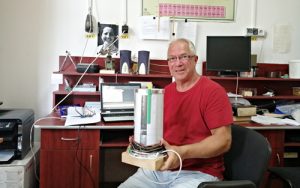
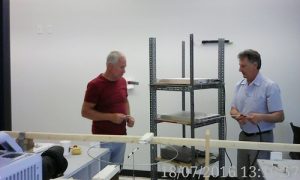
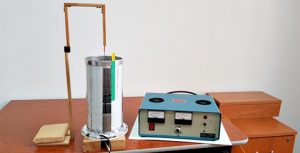
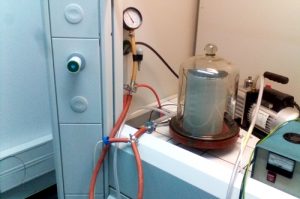
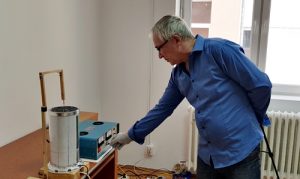

Ce bătaie de joc e asta? Am uitat sa scriem românește ?
Gasiti pe site si varianta in limba romana. Varianta in limba engleza a fost postata ulterior celei in limba romana pentru a permite si celor care nu cunosc limba romana sa citeasca stirea.
Cu respect,
Marius Chirita